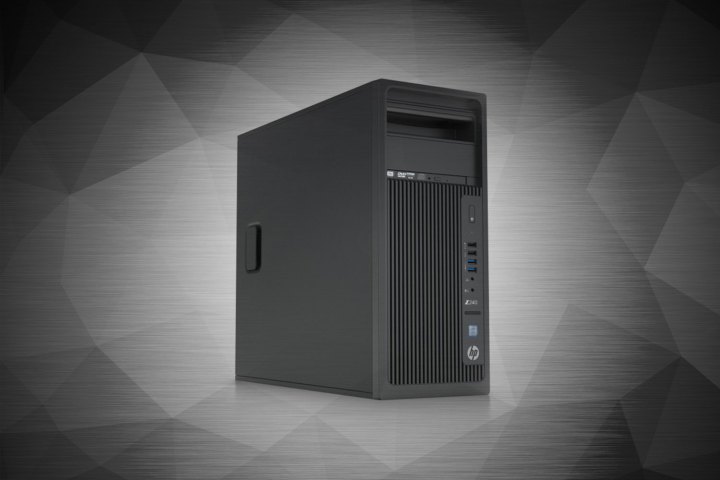
The third-generation workstation now supports Intel’s Core i7-6700K processor, providing a 13-percent performance gain compared to the previous top-of-the-line processor HP offers, the Core i7-6700. The 6700K has a base clock speed of 4GHz, a Turbo Boost speed of 4.2GHz, 8MB of cache, an integrated Intel HD Graphics 530 GPU, and a thermal envelope of 91 watts.
“HP has added better voltage regulators that improve power delivery to the processor in an effort to keep the Core i7-6700K at its Turbo Boost maximum more frequently,” an HP Workstations representative told Digital Trends in a call. This is an interesting approach to improving performance. HP says it took this path in an effort to improve performance without actually overclocking the chip, as doing so can decrease stability, and also voids Intel’s warranty.
According to HP, the updated workstation now offers a choice of Windows 7, Windows 10, and Linux operating systems. It also offers the latest discrete graphics chips from AMD and Nvidia, two optional ultra-fast HP Z Turbo PCIe SSD drives that can reduce boot up time, calculation, and even graphics response times, optional dust filters to keep the innards fresh and clean, and carrying handles on the back and side of the tower.
The company said on Tuesday that all components mounted inside the new Z240 workstation are ISV certified, meaning they are tested and approved to work with professional software applications. For example, the company conducted tests with Audodesk Revit and AutoCAD, and discovered performance improvements of 13-percent and 12-percent, respectively, with the new workstation compared to the second-generation model.
“The 368,000 hours of grueling quality testing and ISV certification means the HP Z240 is designed as a long-term budget friendly solution,” said Josh Peterson, vice president of global product management for workstations.
In addition to updating the Z240 workstation, HP also plans to ship its HP Remote Graphics Software receiver for Mac in August. Revealed back in April, this solution will allow users to securely connect a MacBook or Mac to any “Z” workstation, and use its locally-installed Windows/Linux apps in addition to native Mac OS apps.
The latest version of the HP Remote Graphics Software platform is 7.1, reportedly bringing a huge performance boost over the previous version thanks to the company’s special HP3 codec. Also included is a new HP Velocity status bar, Windows 10 tablet and touch features, improved Linux audio, a new user interface for administrators, and more. Thus, users should see better app performance from the software in addition to the hardware supplied by the Z workstation.
“The HP RGS Receiver for Mac is just one of the tools that HP provides to customers looking to increase power and performance by integrating HP Z Workstations with existing IT setups, part of the company’s unwavering commitment to the creative professional,” the company said.
To grab the latest HP Z240 workstation, head here.


